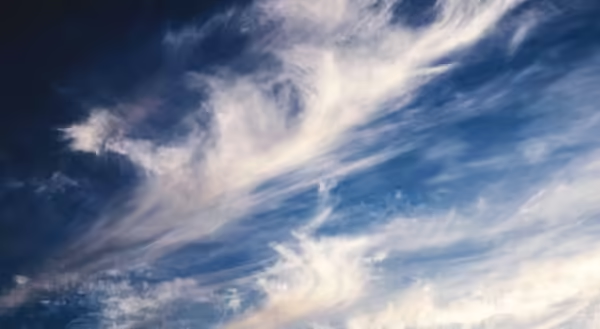
Here in the Midwest, we usually look toward our western skies to see what may be coming our way. That’s because the winds several thousand feet up that drive our weather are mostly coming from the west. Why this direction? There are three steps.
1. Air pressure and wind
“Air will blow from high to low.”
This little ditty explains why air moves. Higher air pressure will force air to move away, while lower-pressure air will bring air in. This initially causes wind.
Across the globe, there are bands of high and low air pressure. A band of high pressure around 30 degrees latitude forces air to move towards a band of lower air pressure near 60 degrees latitude. If you’re picturing this in your mind, you’re visualizing the air moving from the south to the north. But we already said our upper air wind comes from the west. What’s going on?
2. The Earth’s spin
While air tries to move from south to north in this area, the earth’s spin, or rotation, comes into play. There’s a law of nature that says something in motion in a certain direction wants to stay moving in the same direction.
It’s the same idea as when you’re bringing bags of groceries home in your car and make a sharp turn. What happens to the bags? They fall over because they wanted to keep moving in the direction the car was going before the turn.
Since the Earth rotates west to east, everything on Earth has this motion already in place. This motion is inbuilt in the air that is trying to move north. As the difference in air pressure makes air move northward, it gets deflected toward the east because that’s the direction it was already moving. This is called the Coriolis Effect. There’s a little more to it, but this gives you an idea of what’s going on.
When talking about winds, we always describe what direction the wind comes from. In this case, the winds are now coming from the west, so they are called westerly winds.
Almost all upper-level winds are westerly. That’s not the case at the Earth’s surface, where winds are affected by smaller areas of high and low pressure, along with friction caused by the Earth’s surface.
3. Riding the Westerlies
Most of our weather in the Midwest is driven by these upper-level westerlies. However, even these winds can get big curves in them, where the air is moving north or south. These undulations can affect our temperatures and precipitation for several days or weeks. Even in these cases though, the wind eventually goes west again.
Watch the wind in real-time
If you would like to watch wind movement in real time, visit Null Earth. This website provides wind speed and direction from the surface to the top of the atmosphere, anywhere on Earth. You’ll see those upper-level westerly winds, and you’ll see how much faster those winds are moving compared to surface winds!
About the Blog
All About Weather is a blog by Duane Friend that explores the environment, climate, and weather topics for Illinois. Get in-depth information about things your weather app doesn't cover, from summer droughts to shifting weather patterns. Never miss a new post! Sign up for our email list.
Duane Friend is the Illinois Master Naturalist Coordinator and Climate Specialist with University of Illinois Extension, serving the organization in many roles since 1993. Duane provides information and educational programs to adult and youth audiences in the areas of soil quality, weather and climate, energy conservation, and disaster preparedness. These programs provide practical solutions for families, farms, and communities. He assists families in creating a household emergency plan, farmers with the implementation of soil management and conservation practices, and local government officials and business owners with energy conservation techniques.